Материалы и сообщения. Рубрика в журнале - Вестник Волгоградского государственного университета. Серия 2: Языкознание
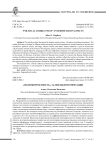
"Политкорректность": аспекты интерпретации
Статья научная
В статье рассматривается актуальное для современного социума понятие политкорректности. Раскрывается его содержание в разные исторические эпохи и применительно к разным отраслям науки: политологии, социологии, культурологии и др. Особое внимание уделяется лингвистическим дискуссиям об объеме этого понятия: политкорректность анализируется в соотношении со смежными понятиями «речевое поведение», «языковая картина мира», «эвфемизм», «толерантность». Утверждается, что политкорректность влияет на изменения языковой картины мира, а наличие эвфемизмов способствует сохранению дискриминации в обществе. На материале статей, размещенных на российских новостных порталах, показано, что в российских средствах массовой информации, а следовательно, в речевой практике социума лексемы политкорректность и толерантность используются не дифференцированно, что отражает смешение соответствующих им понятий. Предлагаются критерии разграничения политкорректности и толерантности: характер объекта, на который направлено толерантное или политкорректное речевое поведение; возможность замалчивания информации; направленность / ненаправленность такого поведения на диалог и др. С опорой на исследования Х.-Й Клатта (H.-J. Klatt) обосновывается необходимость включения специального курса «Политкорректность» в программы российских высших учебных заведений, общеобразовательных школ, гимназий, лицеев.
Бесплатно
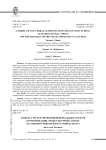
Статья научная
The paper focuses on the problem of structuring of non-verbal communication in the context of studying the process of intercultural contacts. The relevance of the proposed approach to the classification of non-verbal communication means is determined by its complex feature. The authors substantiate the fact that an effective classification should take into account the achievements of several scientific disciplines having the fundamental value to the understanding of the current problem: psychology, psychophysiology, human ethology and linguistics. Also, it is necessary to take into consideration the polycode character of intercultural communication. Based on the previously published classifications, the current state of scientific knowledge on this problem, the experience of a theoretical study of this problem, and practical and didactic applications, the author propose a two- level typological model which is specially designed to compare the non-verbal behaviours of different cultures representatives. Logically, this model comprises the following categories of non-verbal communication means: paraverbal means; kinesic means; sensory perception means of communication; spatial and temporal means. To define the categories and their sub-categories the authors exemplify the means of communication with the context of interactions between representatives of the Czech and Russian cultures. The authors concluded that non-verbal means of communication should be structured taking into account the specific purpose of the study.
Бесплатно
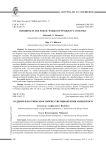
Buddhism in the poetic works of innokenty annensky
Статья научная
The importance of the work is determined by the place which I. Annensky occupies in Russian poetry and his unrelenting influence on generations of readers. The purpose of the work is to reveal the presence and linguistic ways of implementing the semantics of the Buddhist understanding of the world in the poetic heritage of I. Annensky. The material for the study is all original poems of the poet. The main methods are semantic, comparative and intertextual analysis. From the days of his study at the university, the poet was well acquainted with the basics of Buddhism and demonstrated obsession with it throughout his life. Several poems undoubtedly present semantic complexes that are directly referred to Buddhism, refurbishing its major provisions. The ways of translating Buddhist semantics are diverse and they are always organically interwoven into an artistic whole. The language of the poet is consistently focused on ambiguity, uncertainty and ambivalence, which is manifested at various text levels. The work lists the main language transformations used by the poet. It is illustrated on the example of the poem “”, which mysteriousness steadily draws the attention of readers and researchers. The author shows that the poem realizes the Buddhist conception of the ratio of extremely small and infinitely large quantities, implying their identity. The authors draw a parallel between the lines of I. Annenskyand W. Blake which implement identical Buddhist ideas. The conclusion outlines the prospects for a detailed analysis of other texts.
Бесплатно
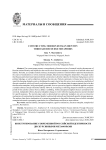
Constructing modern Russian identity through discourse metaphors
Статья научная
The current paper presents a comprehensive literature review of research into the phenomenon of Russian national identity and emphasizes the crucial role of discourse metaphor in narratives of national culture and identity. The latter, as a complex mental construct, encompasses common or similar beliefs or opinions internalized in the course of socialization as well as emotional attitudes, behavioural and linguistic dispositions. The paper claims that Russian patriotism-based national identity construction is directly related to the historical background, current political ideology, as well as objectives and tasks the state sets. Patriotic sentiments in Russia tend to boost due to some life-changing dramatic events or challenges the countryhas to face; this gives rise to employing a multitude of discursive practices, which relyheavilyon discourse metaphors. The relevant point the paper proposes lies in the fact that discourse metaphors, being conceptuallygrounded, serve as a pervasive cognitive mechanism applied to explain a complex abstract concept of national identity. However, its meaning is still being shaped in relation to a particular period of time and the context where a debate is unfolding. Unlike conceptual metaphors that are considered to be universal, independent of time, discourse metaphors change or evolve within the ongoing discourse and are intended for specific purposes. The current paper seeks to demonstrate how particular metaphors can serve as discursive mechanisms of constructing the national identity to achieve both culturally and historically specific strategic purposes. The authors claim that a combination of co-occurring metaphors in the public discourse forms a holistic extended metaphorical narrative promoting a particular view of Russianness and focus on some of them.
Бесплатно
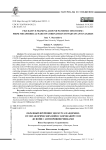
Статья научная
The current paper deals with metaphorical framing of the COVID-19 pandemic and public response to it in the public and media discourse. Being one of the most dramatic global challenges of the third Millennium, the COVID-19 pandemic spurred transformation in social order, economic/business relationships and dramatic growth in social anxiety and tensions, mistrust and discriminatory measures. It has inevitably found its reflection in language and related discursive practices, which rely heavily on discourse metaphors. When being systematically employed, they affect people's views of events, situations and decisions they subsequently make. The present paper focuses primarilyon the COVID-induced discourse changes that create new metaphorical framings and re-shape the familiar ones. The repertoire of elicited discourse metaphors framing the coronavirus discourse communicates the changing combating strategies referred to by the authors as globalist, nationalist and discriminatory. By drawing on specially compiled subcorpus of public and media texts, the paper reveals the conceptual and inferential structure of the concept of the COVID-19 pandemic and discusses the possible implications of activating various pandemic-related frames. The study stresses that the discursive construction of the coronavirus pandemic mirrors the dynamic nature of the pandemic itself as well as the measures to combat the insidious virus taken bynational governments, the spread of misinformation and fake news as well as the split in the society and discrimination of certain groups (vaccine deniers/anti-vaxxers). Acknowledging the prevalence of military metaphors in the pandemic-related discourse, the authors claim that metaphorical framing serves as a crucial conceptual tool to communicate the gradual transition from war on COVID-19 to war of vaccines and ultimately to war on out-groups (vaccine deniers, anti-vaxxers).
Бесплатно
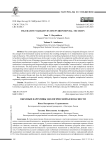
Figurative narratives of environmental security
Статья научная
The current paper presents a comprehensive overview of numerous, frequently divergent, views of the concept of environmental security and stresses the resulting ambiguity in its interpretations across various types of discourse. This calls for the need to provide an overarching explanation of what environmental security is to be able to tackle environmental issues in the years to come. Given the complexity and the abstract nature of the term, it is the effective use of language resources that can be helpful in making sense of the environmental security and relevant mechanisms to ensure it. The paper argues that figurative language serves as a pervasive cognitive mechanism in interpreting and foregrounding the major aspects of sustainable “communication” with and about the environment. The focal point of the paper is the authors’ urge to search for an apt metaphorical narrative encompassing various aspects of environmental security as a single metaphor is hardly able to cover a myriad of interdependent relations in the course of human-nature interaction. The analysis of the recurring discursive metaphors (military, medical, care) to refer to environmental security has revealed their downsides in promoting an adequate view of the current threats and, thus, the lack of public awareness of the emergency actions to save the planet.
Бесплатно
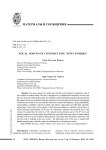
Focal points on constructing news stories
Статья научная
The issues stated in the article line with the current interest to pragmatic value of news releases in modern media. The news is thought to be a verbalized focal reflection of some event that was chosen by media professionals for setting the current information agenda. Having generated the opinions on the newsworthiness the authors present a set of values that may be used for measurement of relevance and clarity of an event reflection in the news content with frequency, clarity, predictability, unexpectedness, amplitude, cultural proximity, elite nations, elite people, personification, negativity among them. The novelty of the research is that the newsworthiness is checked with the focus to lexical (thematic) representation of the news in a diachronic approach: the empirical base of the research was taken from the archives of UK national and local media sources (18-20 th cent.) and implied comparison of lexical means that reflected an event itself and some values of human interest potential in the news stories written in defined periods. The article states the trend for dynamics in the way the event is reflected in the news stories - the information core of the story is merged with detailed reporting parts, and their content is conditioned by social and moral values.
Бесплатно
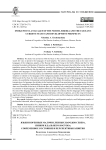
Статья научная
The study was carried out with the focus on the current issues of sociolinguistics related to the search for ways to preserve the languages of small peoples. The article systematizes data on the state of the languages of the indigenous peoples of the Russian Federation living in the North, Siberia and the Far East, presented in modern publications of historians and linguists, and the documents that reflect the results of the 2010 population census of the Russian Federation, considers the influence of sociolinguistic factors on the language situation in these territories. Having analyzed the world experience of legal language legislation on preserving the cultures and languages of small peoples, the authors attempted to apply some global criteria to the Russian legislation and socio-economic practice and identified socially significant criteria for establishing the language situation in relation to the languages of the indigenous peoples of the Russian Federation living in the North, Siberia and the Far East: the total number of speakers of the language, the use of the language in the education system, the availability of educational and methodological materials for teaching, the factor of inter-generational transmission of a language, the attitudes to the functional benefits from practicing the language among its native speakers. By compiling a methodology for categorizing the language survival type five prototypes of the language state were identified on the basis of statistical data: safe; relatively safe; endangered; critically endangered; close to extinction or dead languages. The authors offered a set of extralinguistic criteria for obtaining objective data on the state of the language and made a supposition that despite the evidence that the languages of the indigenous small-numbered northern peoples of the Russian Federation, with rare exceptions, are on the verge of extinction, significant efforts are being made by the government of the country and the indigenous northern peoples themselves to preserve these languages.
Бесплатно
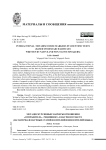
Статья научная
The present research investigated textual representations of writer-reader interaction in academic writing. The focus of the study was on the use of metadiscourse markers, i.e., stance and engagement markers, in applied linguistics research articles (RAs) published in English and Persian, the former written by Persian and English-speaking researchers, and the latter by Persian-speaking researchers. A cross-cultural analysis of RAs revealed similarities and differences in how academic writers express their stance and interact with their readers. Among the stance markers, hedging devices were found to be more frequently used in English RAs for expressing the authors’ position, regardless of their native language. Persian RAs, on the other hand, predominantlyused attitude markers for that purpose. In terms of the engagement markers, directives were the most prominent linguistic features employed by the writers in their native language. However, theywere significantly less frequent in English RAs written by Iranian scholars. Compared to native English writers, Iranian writers showed a slightly stronger tendency to use reader pronouns and personal asides in their native language. This study reinforces the impact of the writers’ linguistic and contextual awareness of the first- and second-language academic discourse conventions on the establishment of a successful writer-reader interaction and effective communication of arguments in academic writing.
Бесплатно
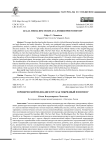
Legal media discourse as a hybrid phenomenon
Статья научная
The paper describes legal media discourse, which is a hybrid discourse formation whose preconstructs are legal discourse and media discourse. The study was conducted using general scientific methods: induction, generalization, analysis, synthesis, description; and specialized linguistic methods: continuous sampling method, discourse analysis. The texts of legal media discourse presented on the official websites of the English-language media platforms such as The Guardian, BBC, The New York Times, The Washington Post, The Times, Washington Monthly, etc. form the empirical basis of the study. Legal discourse and media discourse are institutional discourses whose interaction results in forming an independent hybrid. The article provides the analysis of legal media discourse using the pattern of the institutional discourse description proposed by V.I. Karasik, which consists of the following criteria: typical participants, chronotope, goals, values, strategies, genres, precedent texts, and discursive formulas. The characteristics of the discursive hybrid under study are determined by referring to the preconstruct discourses features identified at the present time. The description of legal media discourse as a specific sphere of the intersection of law and media is viewed as not a mechanical sum of the characteristics of legal discourse and media discourse, but their synthesis which accounts for the independent nature of the hybrid discursive formation.
Бесплатно
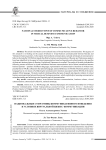
National stereotypes of communicative behavior in virtual business communication
Статья научная
The article is devoted to cross-cultural issues of virtual business communication. The urgency of this research is in finding out the causes of failures in virtual business communication between Russian and Vietnamese business partners. In the aspect of intercultural communication, national stereotypes of communicative behavior (hereinafter NSCB) that impede the effective business communication of Russian and Vietnamese speakers have been identified. In the aspect of virtual communication, based on linguistic and cultural analysis, the specifics of electronic business letters in Russian, English and Vietnamese is revealed. The results of the study indicated the following reasons of failures in virtual intercultural business communication: lack of direct interactions between business partners - speakers of different languages; representation of communicative intentions in written form; peculiarities in NSCBs, reflected in the national language; cultural differences in NSCBs of business partners; each language has its own means of verbalizing the communicative intentions associated with the NSCBs of the native speaker of that language. The study resulted in distinguishing the types of speech and etiquette violation in virtual business communication between Russian and Vietnamese partners, which might help in lessening communicative misunderstanding and achieving extra-linguistic goals of communication.
Бесплатно
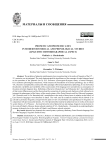
Статья научная
The problem of phonetic and phonemic laws reconstruction in the works of linguists of the 19th - 21st centuries was investigated. The study demonstrated the significance of the concepts of sound changes based on the postulate of the phonetic law by E.D. Polivanov (convergent-divergent theory of sound changes),R.O. Jacobson (phonological mutations), which became the foundation of historical phonology, due to whichV.K. Zhuravlev completed the construction of the paradigm of historical (diachronic) phonology. It was shown that the phonetic variability and variability of the sound system of the language were considered as a consequence of the action of certain linguistic laws. Definitions of the terms “phonetic law” and “phonemic law”, the establishment of their main differences proved the thesis about the connection of synchrony and diachrony which allowed us to interpret the phenomena of the history of the sound systems of the Proto-Slavonic and East Slavonic languages. V.K. Zhuravlev and Yu.Ya. Burmistrovich's contribution to the study of these issues in relation to the history of East Slavonic languages were described in detail. The work used an actualistic method which allowed us to consider a particular linguistic concept from the point of view of contribution and significance for linguistics in comparison with previous achievements. A.S. Orel presented the material on phonemic laws in works on the sound system history; A.V. Piskunov - the material on the role of phonetic law and analogy, linguistic reconstruction in the works of Kharkiv, Moscow, Kazan schools scientists of; V.A. Glushchenko - the material on understanding the essence of phonetic law in the works of Kharkiv and Moscow schools scientists.
Бесплатно
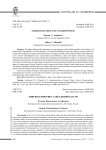
Semiolinguistics of sacred power
Статья научная
The paper addresses the phenomenon of sacred power as the oldest regulator of the behavior of ethnos from the perspective of social semiotics: it includes the definition of this type of power, its basic spheres of actualization (religious and magic) and identification of its lingual-semiotic, ethno-cultural and discourse parameters in the various semiolinguistic ways: sacred objects and buildings, actions and rituals, verbal texts, language formulas being included. The sacred is defined as something inexpressible by its nature, it is stated that it can be approximated to personal understanding only through the symbol. Sacred power generates semiolinguistic space in the form of verbal and non-verbal signs of various form and content that perform their protective impact on the objects of sacred power. Special attention is paid to genres and rituals through which sacred power is exercised. The authors highlight the phenomenon of ceremony that gives a sacred meaning to human actions, and show what special rituals are linked to communicating with the sacred power.The semiotic aspect of religious and magical protection is differentiated by the quality of the sign: religious semiolinguistics involves sacred myths and symbols, and magic semiolinguistics is based on chasing-out and purifying magic with its signs and texts.
Бесплатно
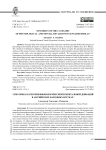
Sensorics of the category of physiological and mental deviations in English drolls
Статья научная
The paper deals with sensory means of the expression within the semantic fields of the category of physiological and mental deviations in English old drolls. The source of material is folklore texts by T. Blount, W.C. Hazlitt, E.S. Hartland, G. Stephens, T. Sternerg, T. Wright, Ch. S. Burne, J. Jacobs. The semantic and contextual analyses of the sensory lexemes, collocations, phraseological units representing the semantic fields that form the category under study were considered as the main research methods. The semantic analysis showed that linguosensory lexical units in the folklore texts actualize different areas of semantic fields that reflect social views about physiological and mental deviations. It has been defined that the structure of such fields implies a core, consisting of lexical units of a neutral-bookish style, the near periphery, including the lexis of informal style with further differentiation, and the interpretative field. The distant periphery in the structure of these fields was not formed. The semantic features of the category of physiological and mental deviations defined in the boundaries of the contextual analysis is comprise into the semantic field of the dicteme as a result of the contextual analysis of lexical units. The material and findings of the study can be used to pursue the contrastive and comparative analyses of perceptional linguistic means in the boundaries of cognitive linguistics, linguosensorics.
Бесплатно
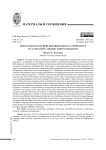
Simultaneous Interpreter Professional Competence in a Cognitive and Discursive Paradigm
Статья научная
The paper presents a simultaneous interpreter professional competence that consists of three components – communicative, extralinguistic and procedural or specialized (sub)competences. It is focused on the third component, which includes the abilities of inferencing, probabilistic forecasting and compression, specifically required for simultaneous interpreting (SI). Inferencing is a two-staged process of retrieving assumptions with regards to composing invariant senses, which means deriving inferences of the message in the source language (SL) and generating implicatures in the target language (TL). Probabilistic forecasting is based on the analysis of the invariant sense prompts in the SL message and boils down to anticipating invariant sense evolvement in the context. It is closely related to compression – an ability to eliminate the redundant information and to condense the retrieved invariant sense in the SI for linguistic and extralinguistic reasons, such as interlanguage asymmetries between the source and target languages and an acute shortage of time because of the speaker's speed. Moreover, compression is one of the key discursive strategies used by the simultaneous interpreter in speech production. These information processing abilities stand for the SI inherent cognitive features or mechanisms and cognitive-and-discursive strategies employed by the simultaneous interpreter in order to meet the pragmatic needs of a SI communicative situation. Descriptive, comparative, model simulation, introspection and observation methods were used for the research task realization. The outcomes of the study show that the above mentioned three cognitive mechanisms, discursive strategies and abilities closely interact in the SI; it is manifested through inferences and implicatures generated on the basis of presuppositions. Relying on his/her professional competence and employing discursive strategies of inferencing, probabilistic forecasting and compression, the simultaneous interpreter chooses the adequate language means to render invariant sense in its transition from the source to target languages. The choice is facilitated by presuppositional knowledge rooted in the worldview of the source and target languages, constituting the simultaneous interpreter's language and conceptual thesauri. Another important factor assisting SI cognitive processes and the choice of discursive strategies is the analysis of text functions that makes it possible to elicit presuppositions helpful for inferencing and probabilistic forecasting.
Бесплатно
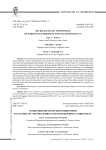
Sociolinguistic monitoring of word usage frequency of youth sociolect
Статья научная
The current paper describes the lexical units ofyouth sociolect and is aimed at monitoring youth speech. Special attention is given to heterogeneous social factors that influence the word usage in youth sociolect and involve micro-and macrosociolinguistic pilot projects on frequency occurrence of English words in a multicultural society. Miscrosociolinguistic analysis was focused on societal and gender differences in youth sociolect. The initial stage of the macrosociolinguistic monitoring included the questionnaire development, setting the boundaries of a sociolinguistic survey and the number of lexical items under consideration. The second step in the project was monitoring itself. Finally, the results of the monitoring were analyzed. The studywas carried out through an online questionnaire, face-to-face and remote interviewing, with native English speakers and speakers ofother languages from different countries and regions. The monitoring of usage frequency demonstrated that a limited number of English lexical units are used in interpersonal and professional communication; the other part of words presents a diverse picture. The respondents involved in professional activity tend to demonstrate more tolerance to the youth sociolect than ordinary people. The analysis proved the point about the heterogeneous character of sociolect usage by youth and its dependence on the sphere of communication.
Бесплатно
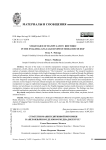
Strategies of manipulative rhetoric in English-language business media discourse
Статья научная
The aim of the study is to identify manipulative strategies implemented through the use of collocations, cliches, idioms, and set phrases in the English-language business media discourse. A quantitative analysis of samples collected from publications in "The Economist" was conducted. The research hypothesis proposes that manipulative strategies in the English-language business discourse are realized through the deliberate choice of collocations, cliches, idioms, and set phrases, which serve as tools for shaping public opinion. The study identified five manipulative strategies. It was established that manipulation through imagery-based expressions is the most frequently employed strategy, while evaluative assessments of factual content and manipulation by criticism are less frequent. The least utilized strategies are manipulation through antithesis and generalization, manipulation via vague or euphemistic language constructions. The research confirmed that collocations, cliches, idioms, and set phrases are extensively used in the English-language business media discourse to implement manipulative strategies, and several strategies may be joined within a single utterance. The findings may have scientific implications, particularly for scholars and professionals in media and business communication.
Бесплатно
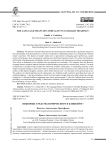
The language means of comicality in clickbait headings
Статья научная
The analysis of material presented in the media discourse demonstrates significant changes in the intentionality of the journalistic text, which are reflected in establishing contacts so as to grab and retain the reader’s attention. This feature of modern media text is represented in changing genre preferences, speech tactics and strategies, and, consequently, selecting and combining linguistic means. One of the manifestations of this trend is the phenomenon of clickbait, which is a communicative act of promising to continue communication. This article is dedicated to the clickbait with the semantics of comicality. The collected from the Russian-language Internet research material includes clickbait headings that promise a certain funny content. The study revealed that a clickbait model includes the following semantic components: a stimulating utterance of the subject of speech seeking to involve the reader in the humorous nature of hypertext; the verbal and non-verbal markers of the object of laughter; markers, which reflect Internet user’s involvement in the communicative act. The analysis of relationship between the components of a clickbait model resulted in specifying four types of clickbait headlines: 1) narrative headlines, which invite the reader to laugh what some other readers have already laughed at; 2) offering headlines suggesting some comic entertainment; 3) allusive clickbaits that hint on the possibility to continue amusing reading; 4) nominative clickbaits, which name the expected laughing reaction to the presentation of some objects.
Бесплатно
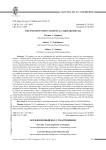
The pseudonymous code of G. Chkhartishvili
Статья научная
This paper sets out to systematize the multiple pseudonyms used by the contemporary writer G. Chkhartishvili. These are B. Akunin ( The Adventures of Erast Fandorin, The Adventures of Sister Pelagia, a series of novels The Adventures of the Master, the project Genres, the plays The Seagull, Yin and Yang, the project The History of the Russian State ), Boris Akunin and Grigory Chkhartishvili ( Cemetery Stories ), Akunin-Chkhartishvili ( Aristonomy, Another Way ), Grigory Chkhartishvili ( The Writer and Suicide ), Anatoly Brusnikin ( Devyatny Spas, Hero of Another Time, Bellona ) and Anna Borisova ( Kreativschik, There, The Seasons ). We investigate reasons for the multiplicity of Akuninian pseudonyms, a strategically honed system of which contributes to his authorial image. It is shown that, while the commercial pseudonyms are aimed at promoting his new literary projects and are implemented through a conspiracy game played with the reader, the creative ones serve to manifest the author’s breadth of interests and philological knowledge such that every new pen name triggers a new writing strategy and a new creative tactic. The analysis of various literary masks’ influence on the author’s creative outcome shows that each pseudonym is ‘placed’ in the literary, genre or artistic time of the text. B. Akunin is primarily the author of historical retro-detective stories, whereas adventure novels are signed by the pen name of A. Brusnikin. A. Borisova ‘writes’ prose set in the present day. From the very beginning, the author ’s real name has been always assigned to his serious literature. The authorial system of names is being constantly refined, distinguishing B. Akunin, the fiction writer, from G. Chkhartishvili, the elite literature writer, in the novels Aristonomy and Another Way the twinned name Akunin-Chartishvili deliver another conceptual image. In conclusion it is stated that the abundance of Chartishvili’s pen names evinces the author’s intellectual and personal intrigue, which points to multiconceptual character of their pseudonymous code, being auto- and self-marketing, creative auto- and self-identification.
Бесплатно
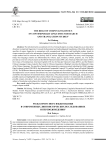
The role of corpus linguistics in contemporary linguistics research and translation studies
Статья научная
The article presents a systematic review of research papers on corpus linguistics as an innovative direction in empirical linguistics. It reveals the theoretical and methodological foundations of the field, defines the specifics of corpus linguistics in comparison with computational linguistics, and highlights modern trends in corpus research as well as the advantages of employing textual corpus data in linguistic studies. It is noted that the corpus method and its resources are actively used in various linguistic researches into many world languages today; that language corpora are differentiated by volume, type, structure, content, purpose, etc. The article provides an overview of such corpora as the British National Corpus (BNC), the American National Corpus (ANC), the Corpus of Contemporary American English (COCA), the Russian National Corpus (RNC), and the Modern Chinese Language Corpus created in the Center for Chinese Linguistics at Beijing University, the Balanced Corpus of the Chinese Language. The specifics of parallel and comparative corpora are noted, including the Child Language Data Exchange System (CHILDES), the International Comparable Corpus (ICC), and the Corpus of English Wikipedia (CEW). The differences between parallel and comparative corpora are also outlined. Prospects for national corpora development lie in new research into almost every area of applied and theoretical linguistics, as well as in scrutiny and further development of translation theory and practice. The characteristics of monolingual, comparative, and parallel corpora are highlighted in the context of their role in linguistic research. It is mentioned that, in addition to parallel corpora, translators' tools also include monolingual corpora, which provide additional material on the subject of translation and enhance the translator's background knowledge.
Бесплатно

